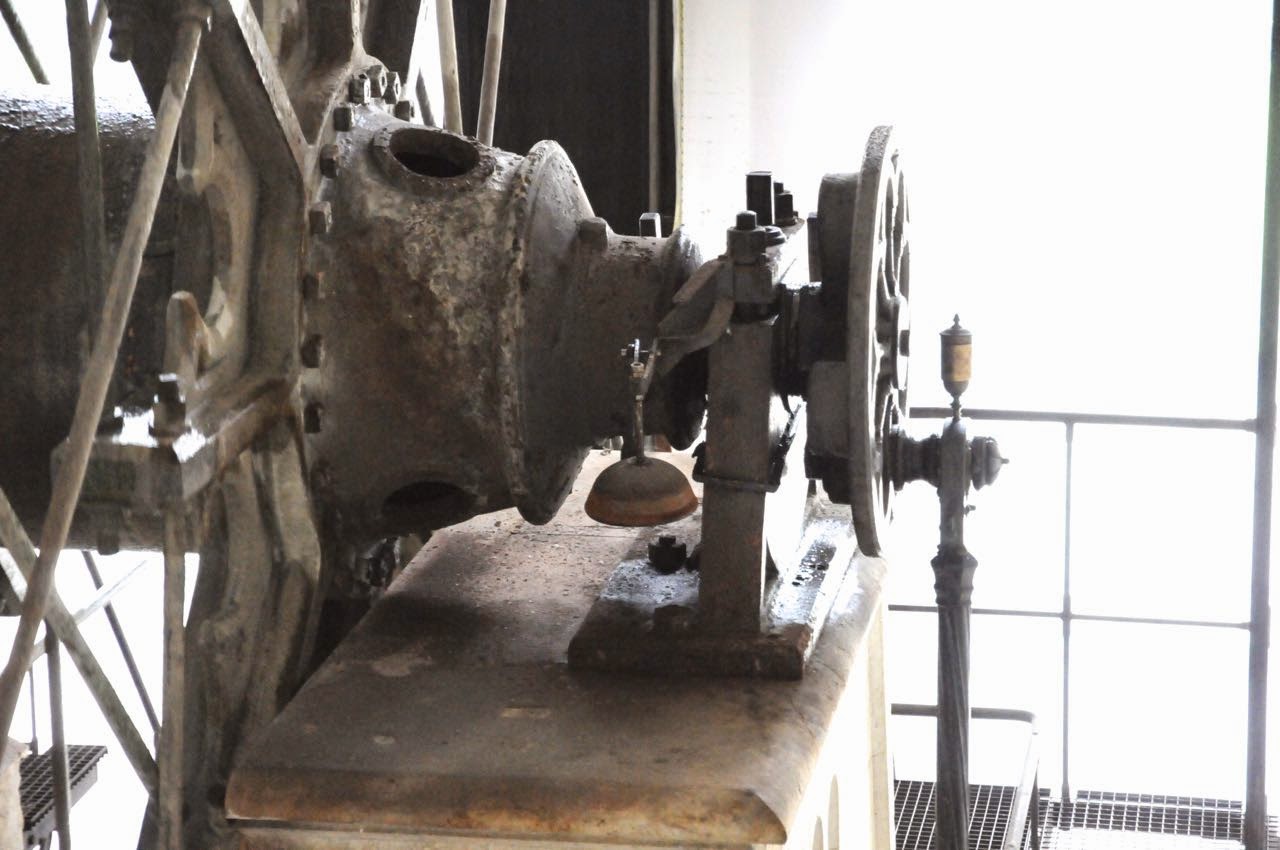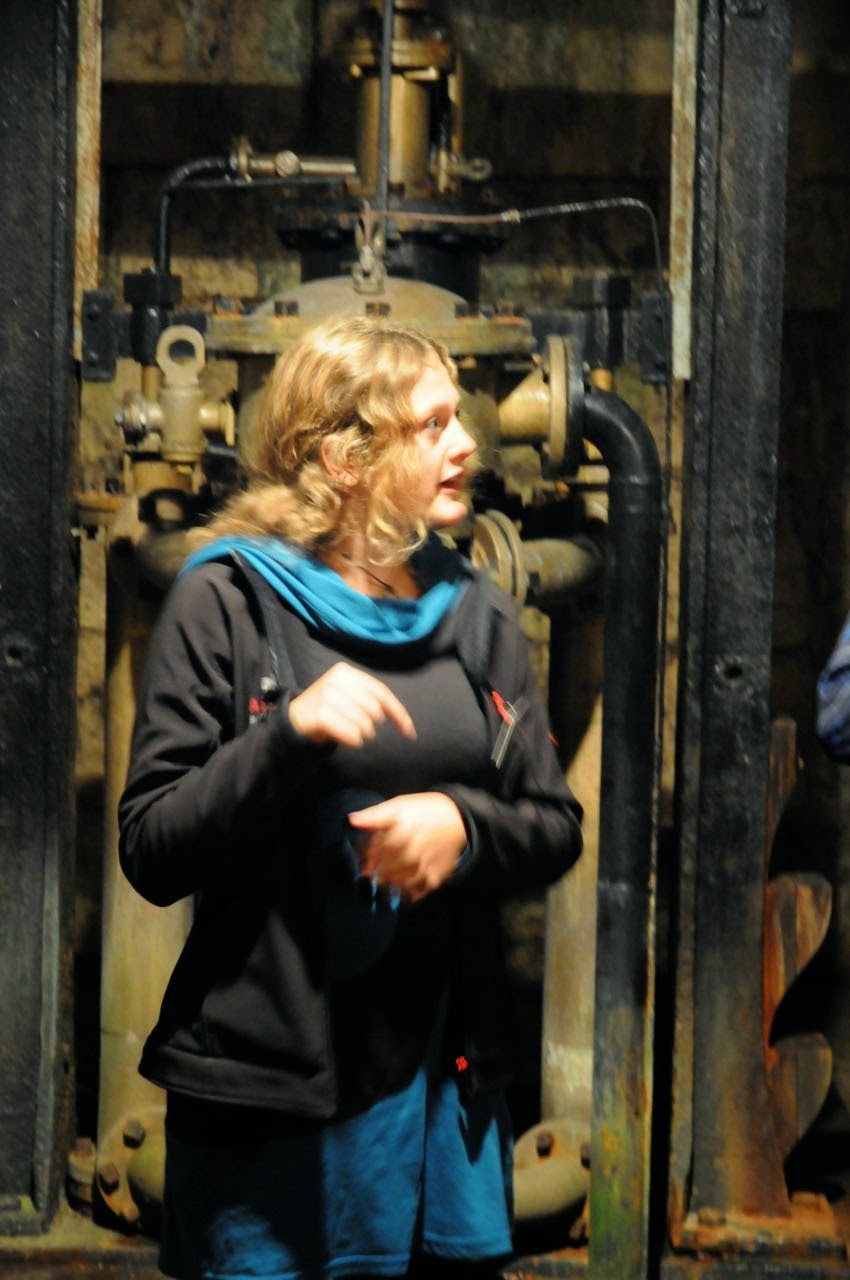Dawn brought another
cool, grey day with light rain. It was impossible to believe it was only a
matter of weeks ago we were in Turkey where it was too hot to sleep indoors.
While still not 100%,
Jane was feeling much better than yesterday. We decide to have another go at
getting to Bad Reichenhall to visit the Alte Saline, the old royal saltworks
that is now a museum. Jane drove, a sure sign she was feeling a lot better. We found
we were less than 3km from the town when we turned back yesterday. Just before
we reached the Alte Seine we passed a woolshop that really brightened Jane’s
spirits.
 |
| On The Road To Bad Reichenhall |
We parked close to the
very imposing saltworks building just as its clock was striking 10:00, the
museum’s opening time. There was a tour of the machinery of the old saltworks
starting at 10:15, it was in German but we were given a printed English
translation of what the guide would be saying. We whiled away the time looking
at various salt products on sale and displays of how packaging had changed over
the years. The cashier came to talk to us having asked where we were from. He
had visited New Zealand and told us about all the places he had visited as well
as giving us some tips on places to see locally.
There were about a dozen
people in our tour group, all German speakers. Our guide arrived, a very bubbly
young woman who spoke very fast, cracking lots of jokes that had the rest of the
party laughing. A woman knowing we spoke English translated some of the guides
opening comments, the woman was born in Germany but emigrated to Canada in
1941. While she hadn’t spoken German in a long time she had a good grasp of the
language.
Our tour started in a
machine hall where two 13 metre diameter top action water wheels drove ten lift
pumps drawing up brine from shafts below. The wheels have been operating day
and night for 150 years, water driving the wheels was channeled from the Latten
mountains. A bell driven by a mechanism connected to each wheel sounded with
each revolution, this was to let the operator know all was running
smoothly. Brine had been extracted from
the shafts from 1260 onwards, at that time men standing on ladders lifted the
brine to ground level in leather buckets. From 1438 a mechanical chain bucket
was used. One of the shafts was drilled as recently as 1931 and the brine,
which has a salt content of 24%, is used for therapeutic purposes in the spa
next door.
 |
| Water Wheel Bell |
We then descended about
15 metres underground via a flight of marble steps in a narrow gallery. We were
shown the Grabenbach gallery with a covered channel of fresh water that runs
for 2km under the town of Bad Reichenhall. The channel was originally dug in
the open between 1524 and 1538 to collect water from fresh water springs to mix
with Brine to reduce salt content.
We continued through an
underground passageway to a chamber housing the Karl Thodor Wasserrad (water
wheel). This bottom action wheel, driven by water in the Grabenbach channel, converts the circular motion to horizontal to drive a brine pump on the Karl
Theodor spring 103 metres away via a larchwood and cast iron system of rods.
Remarkably, the pump has operated non-stop since 1796.
We walked along the
gallery housing the rod system to see the pump in action above the Karl Theodor
spring. It’s an ingenious mechanism that lifts 40 m3 of brine by 6m
each day. We were told the salt content of the brine had fallen over the years
and is now only used for refining purposes and to feed a fountain in the spa gardens.
There was a marble plaque dedicated to Karl Theodor, King of Bavaria, in the
chamber housing the brine pump. Theodor was responsible for the development of
the salt mines in the area between 1791 and 1793. A large proportion of
Bavarian state income was derived from salt mining.
 |
| Larchwood Rod Linkage (left) Between Water Wheel And Pump |
We backtracked a short
way along the gallery to a natural grotto formed when rock salt was leached
out. The grotto houses ground water reservoirs which overflow into the
Grabenbach channel.
We then ascend into a
chamber beneath the two large water wheels where our tour had started. It was
explained this is where all the salt springs converge and the pumps driven by
the two large wheels raise up to 900 m3 of brine to above ground
level every day.
Our tour ended there and
our guide escorted us to an exhibition describing the history of salt mining in
the area. An interesting piece of history was while the salt works had plenty
of brine, it began to run short of the wood used to evaporate the water from
the brine. A left field solution was developed whereby the brine was pumped via
a canal to Rosenheim where there were plenty of forests.
I really enjoyed the
visit, particularly seeing how German ingenuity and engineering skills got
brine to the surface and the salt works. Jane was less impressed.
After the museum Jane
wanted to visit the wool shop we had seen earlier, I didn’t, so we agreed to
meet back at Smarty in an hour. I spent the time exploring the town. A food
market was being held in the main square, a wedding had just taken place in the
Town Hall on one corner of the square and the newly weds emerged as I was
passing.
 |
| Bad Reichenhall Street |
 |
| Bad Reichenau Wedding |
Jane beat me to Smarty
and was waiting patiently when I got back. I told her about the market and we
walked back there for Jane to have a look and to buy some bread.
From Bad Reichenhall we
drove to the nearby hilltop village of Anger which was rather disappointing
although it did have a magnificent church and some rather fine houses.
 |
| Anger House |
We returned to Mabel for
lunch after which we took her to the camper service point to fill with fresh
water. We were very surprised there was a charge for that - €1 would buy us 80
to 100 litres. But it didn’t, €2 wasn’t enough to fill Mabel’s 135 litre tank.
We made yet another trip
to McDonalds for our €1 coffees and free wi-fi.
Back at Mabel I cooked
riso with tuna and sun dried tomatoes for our dinner.


























